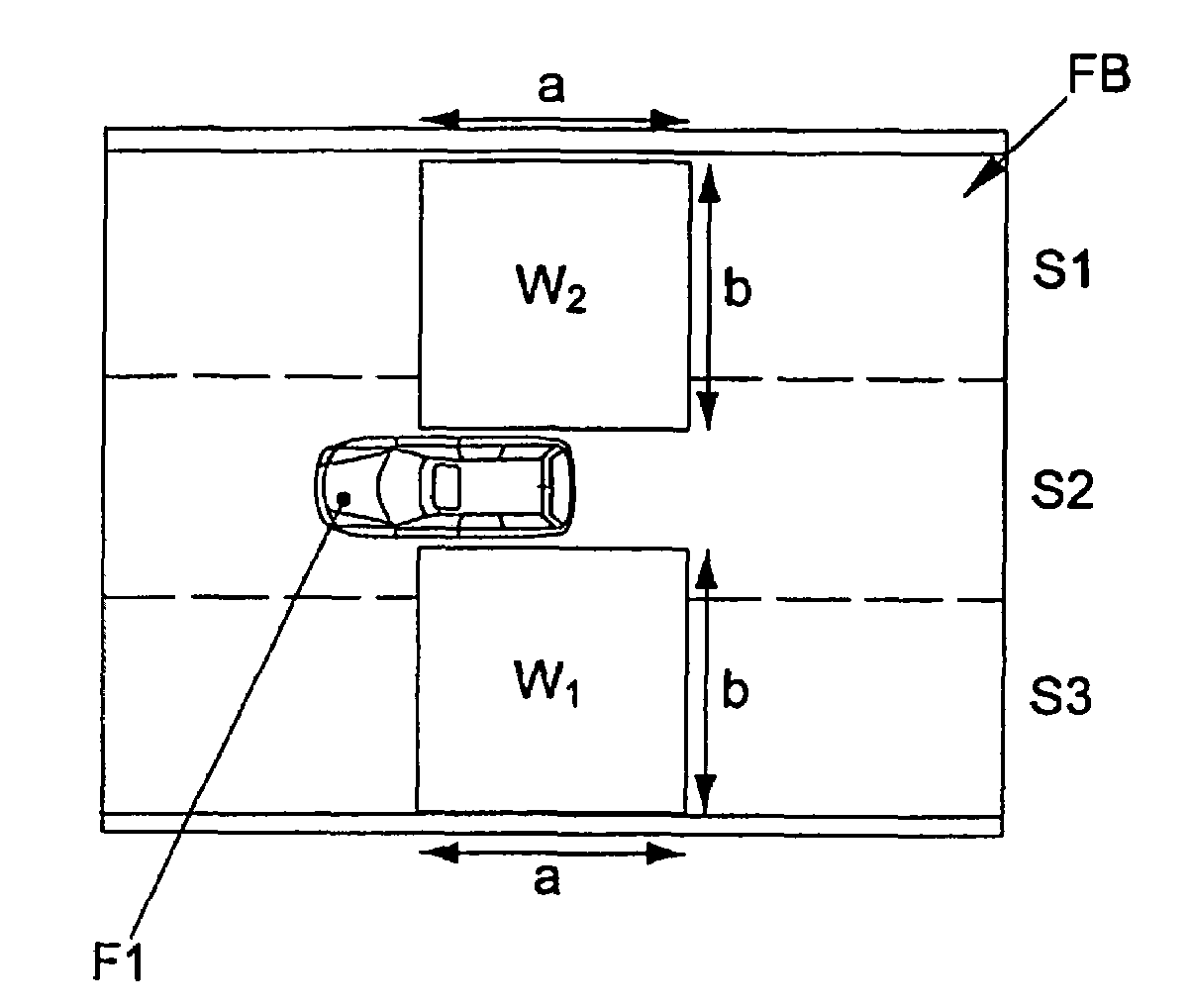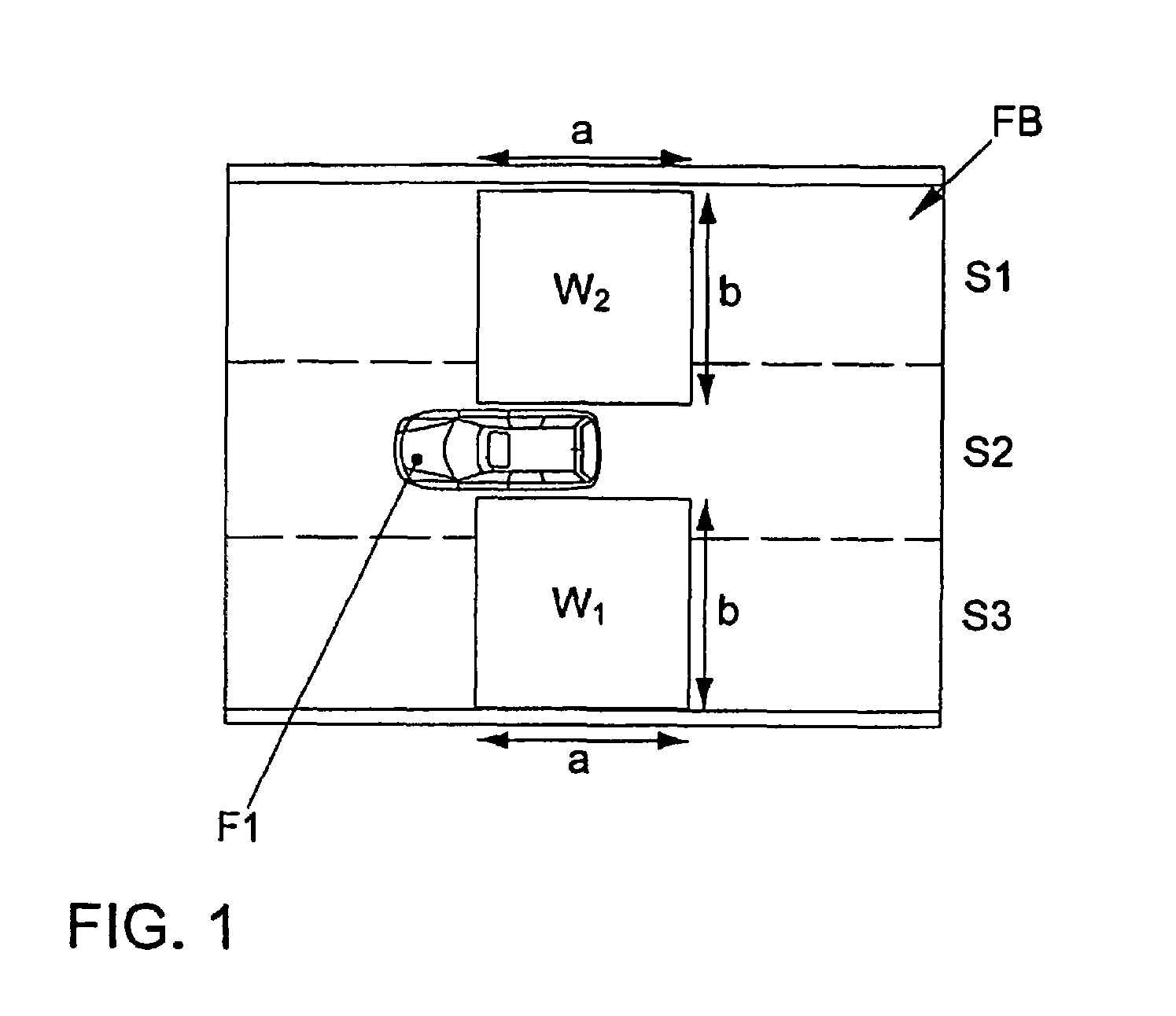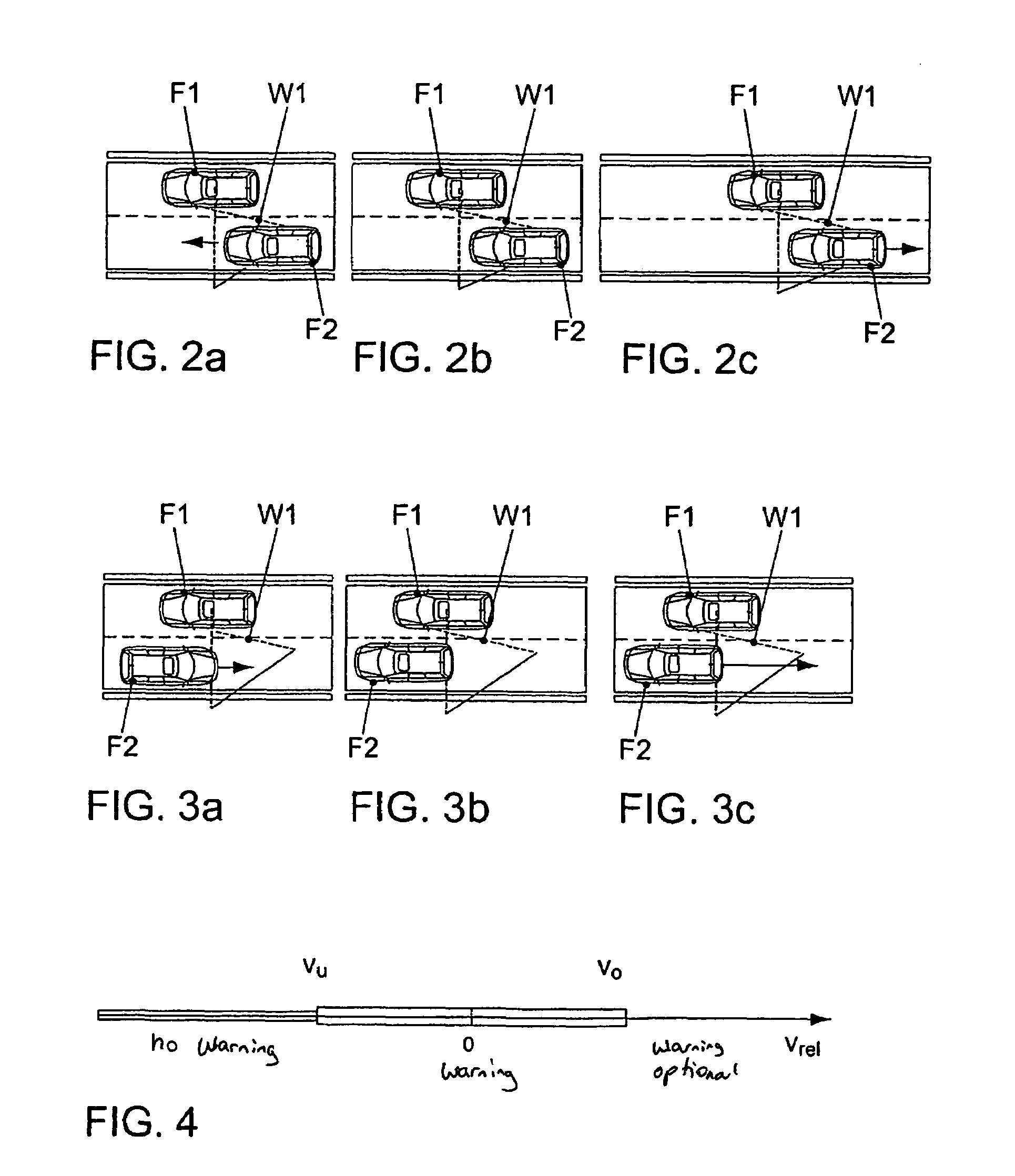Method and device for monitoring blind spots of a motor vehicle
a technology for motor vehicles and blind spots, applied in the direction of instruments, pedestrian/occupant safety arrangements, and reradiation, etc., can solve the problems of not being able to examine the side of the vehicle that the driver is not able to examine without a significant change in the field, and the driver is not able to examine all the regions
- Summary
- Abstract
- Description
- Claims
- Application Information
AI Technical Summary
Benefits of technology
Problems solved by technology
Method used
Image
Examples
Embodiment Construction
[0028]FIG. 1 is a schematic view of so-called blind spots on each side of a motor vehicle. What is shown is a motor vehicle F1 which is traveling from right to left in the drawing, in the middle lane S2 of a roadway FB having three lanes S1, S2, S3. Both on the driver's side and on the passenger's side, in each case a rectangular region W1, W2 is illustrated, having edges a, b which define, for example, a rectangle of approximately 5 m×5 m. These approximate regions W1, W2 are defined below as blind spot regions or warning regions, which are not able to be examined by the driver in the outside mirrors. The regions depend on the size and the sitting position of the driver, as well as on the type and the setting of the outside mirrors, as well as on the construction of the vehicle itself.
[0029]Furthermore, the size of the blind spot regions depends on the driving situation, such as the speed.
[0030]In the following FIGS. 2a to 2c, 3a to 3c, 5a to 5d, 6a to 6c, 7a to 7c and 8a to 8c, th...
PUM
 Login to View More
Login to View More Abstract
Description
Claims
Application Information
 Login to View More
Login to View More - R&D
- Intellectual Property
- Life Sciences
- Materials
- Tech Scout
- Unparalleled Data Quality
- Higher Quality Content
- 60% Fewer Hallucinations
Browse by: Latest US Patents, China's latest patents, Technical Efficacy Thesaurus, Application Domain, Technology Topic, Popular Technical Reports.
© 2025 PatSnap. All rights reserved.Legal|Privacy policy|Modern Slavery Act Transparency Statement|Sitemap|About US| Contact US: help@patsnap.com



